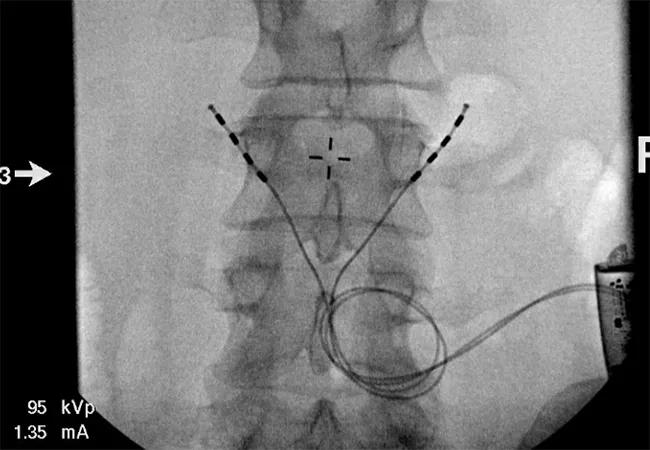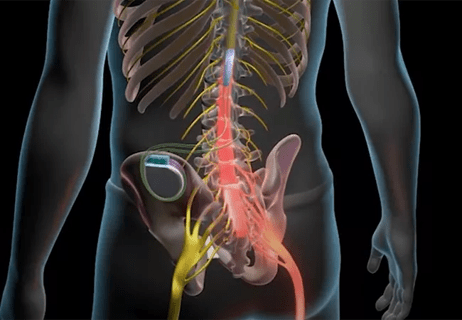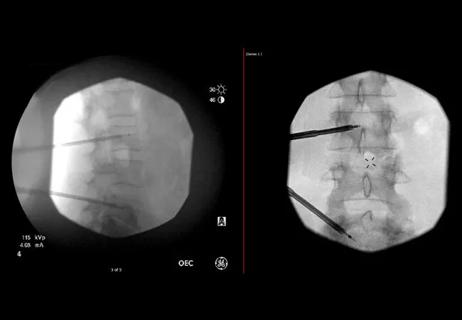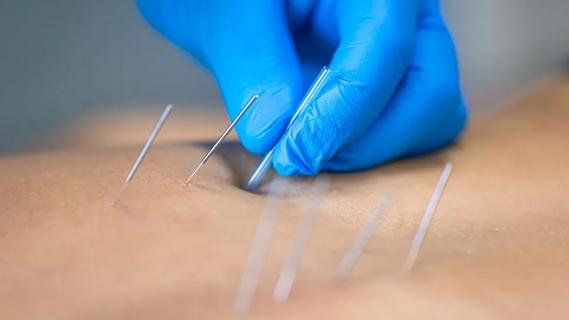Implantable neurostimulating device helps restore stability to multifidus muscle

Cleveland Clinic pain management doctors are using an innovative device approved in 2020 by the U.S. Food and Drug Administration to improve the lives of some patients suffering from chronic lower back pain.
Advertisement
Cleveland Clinic is a non-profit academic medical center. Advertising on our site helps support our mission. We do not endorse non-Cleveland Clinic products or services. Policy
The device, called the ReActiv8 Implantable Neurostimulation System, targets the lumbar multifidus muscle, which functions to stabilize the spine. Deconditioning of the muscle is implicated in some types of chronic lower back pain. Patients who have ReActiv8 use a wireless remote control to periodically stimulate the muscle and help recondition it.
Sherif Costandi, MD, a specialist in Cleveland Clinic’s Department of Pain Management, has used ReActiv8 with three patients so far, all of whom are experiencing significant improvement of their symptoms.
“This therapy is definitely good news, because it allows us to address a big patient population that usually presents with refractory chronic mechanical low back pain, who have had multiple interventions, including physical therapy,” says Dr. Costandi. “In the past, we have not been able to do anything more for them, but now we’re able to provide them with this new therapy.”
This is the first approach that focuses on restoring muscle function, says Dr. Costandi. “Other procedures we do are ablative; we cause the deadening of nerves so they stop transmission of pain. This therapy actually stimulates the muscle, reconditioning it to function properly again, which helps with the pain relief.”
The treatment is appropriate for patients with a history of chronic axial back pain. Assessment is confirmed clinically through use of the multifidus lift test and the prone stability test, and with imaging that indicates atrophy of the lumbar multifidus.
Advertisement
The device comprises an implanted pulse generator and two leads, which are surgically implanted under deep sedation. The ends of the leads are placed with four electrodes near the medial branch of the L2 dorsal ramus nerve where it crosses the L3 transverse processes. Tines on the ends of the leads are designed to connect to the intertransversarius muscles, safely away from the neural foramen and the dorsal root ganglion. The pulse generator can deliver stimulation between any pair of electrodes on each lead.
Once the patient has recovered from surgery, the device activation process begins. The physician works with clinical engineers to calibrate the pulse to deliver optimum stimulation – enough to effectively pulsate the muscle but not enough to cause discomfort. During the activation process, physicians rely on feedback from the receiver as well as from the patient to identify the optimal stimulation.
At home, the patient uses a remote control to turn on the device for a certain period of time several times throughout the day. In essence, says Dr. Costandi, the pulses “wake up” the muscle. ReActiv8 does not provide on-the-spot relief, but does reduce pain over time, he says.
“We have two subsets of patients. Those we call early responders begin feeling improvement within weeks,” he says. “Other patients begin to feel better within months. As with traditional physical therapy, it depends on the condition of your muscles.”
Peer-reviewed studies of ReActiv8 have yielded positive results. A December 2021 article in the journal Neuromodulation reported on a study that showed that 71% of 156 patients who had the ReActiv8 for two years were still experiencing more than 50% reduction in pain; 65% reported complete resolution of pain. Dr. Costandi believes the device will change the treatment landscape for what has been an intractable pain management challenge.
Advertisement
“Multifidus dysfunction has been a significant problem for those with back pain, but the only therapy at hand was exercise, and for most patients it was not sufficient,” he says. “The patients that we’ve had on ReActiv8 are having a great response. One of them is highly active, and that also is helping to support the therapy,” he adds. “It’s a great option, especially for younger patients, because they know they are looking for relief for years to come. They can put these muscles back into action so that it helps for the long term.”
Advertisement
Advertisement

Study participants also reported better sleep quality and reduced use of pain medications

Individual needs should be matched to technological features

Pathophysiology, diagnosis, treatment and a COVID-19 connection

Interventional pain management when conservative measures fail

Two-hour training helps patients expand skills that return a sense of control

Program enhances cooperation between traditional and non-pharmacologic care

National Institutes of Health grant supports Cleveland Clinic study of first mechanism-guided therapy for CRPS

Pain specialists can play a role in identifying surgical candidates